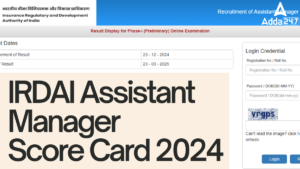Eight people viz. A, B, C, D, E, F, G and H are sitting in a straight line facing North. Each one of them has passed a recruitment exam and must join the office on different months viz. January, February, March, April, May, June, July and August but not necessarily in the same order.
1. G sits third to the right of the person who joins in May. The person who joins in August sits second to the right of G. A and E are immediate neighbours of each other. Neither A nor E is an immediate neighbour of G.
2. H sits third to the right of the person whose joining date is in January. Neither A nor E has joining dates in January. H’s joining date is not in August.
3. Only two people sit between E and the person whose joining date is in July. The person whose joining date is in February sits to the immediate left of D.
4. Only one person sits between E and B. C joins on one of the months before July. E joins after April. G joins after A, who sits at extreme end. G’s joining date is not in July.
Q1. On which of the following month does H join the office?
(a) April
(b) June
(c) July
(d) February
(e) March
Q2. Who amongst the following sits exactly between E and B?
(a) The person whose joining date is in May
(b) The person whose joining date is in January
(c) D
(d) A
(e) The person whose joining date is in August.
Q3. ‘H’ is related to ‘July’ in a certain way based on the above arrangement. ‘B’ is related to ‘June’ following the same pattern. Then who is related to ‘May’ following the same pattern?
(a) F
(b) G
(c) A
(d) D
(e) C
Q4. Which of the following is true regarding D?
(a) Only two people sit to the left of D
(b) D is sitting third to the right of the person whose joining date in July
(c) E and B are immediate neighbours of D
(d) D’s joining date is in May
(e) None of these
Q5. Who amongst the following has joining date in June?
(a) F
(b) E
(c) G
(d) D
(e) C
Directions (6–10): Each of the questions below has a few statements, followed by four conclusions numbered I, II, III and IV. You have to consider every given statement are true, even if it does not confirm to the well known facts. Read the conclusions and then decide which of the conclusions can be logically derived.
Q6. Statements: Some Carrot is tomato.
Some tomato is brinjal.
Some brinjal is potato
Conclusions:
I. Some Carrot is potato.
II. No tomato is potato.
III. No Carrot is potato
IV. Some tomato is potato.
(a) Either I or III
(b) Either II or IV
(c) Either I or III and either II or IV
(d) All of the above
(e) None of the above
Q7. Statements: Some sun are moon.
All moon are stars.
Some stars are planet.
All planet are galaxy.
Conclusions:
I. All moon are planet.
II. No stars is a sun
III. Some stars are sun
IV. All planet are moon.
(a) Only I
(b) I and either II or III
(c) I and III
(d) Either II or III
(e) None of these
Q8. Statements: All mirrors are combs.
No comb is oil.
All combs are shampoo.
Conclusions:
I. No mirror is oil.
II. No shampoo is oil.
III. Some shampoo are oil.
IV. All combs are mirrors.
(a) Only I
(b) I and Either II or III
(c) I and III
(d) Either II or III
(e) None of these
Q9. Statements: All fan are cooler.
All cooler are AC.
All fan are exhaust.
Conclusions:
I. All exhaust are fan.
II. Some cooler are exhaust.
III. Some AC are exhaust.
IV. All exhaust are AC.
(a) Only I
(b) Only II
(c) II and III
(d) III and IV
(e) None of these
Q10. Statements: Some Cat is rat.
Some rat are dog.
No dog is a cow.
Conclusions:
I. No Cat is a cow.
II. No rat is a cow.
III. Some rat are not cow.
IV. Some Cat is dog.
(a) I and II follow
(b) Only III follows
(c) Either I or II follows
(d) Can’t be determined
(e) None of these
Directions (11-15): Study the following information carefully to answer the question given below:
Ten people are sitting in two parallel rows containing five people each in such a way that there is equal distance between adjacent persons. In row 1-P, Q, R, S and T are seated and all of them are facing North and in row 2-M, N, O, U and V, are seated and are facing south. (but not necessarily in the same order). Each person also likes a different Colour, namely Blue, Black, Green, Pink, Red, Grey, Brown, Magenta, Purple and White (not necessarily in the same order). T sits exactly in the middle of the row and faces the one who likes Red. Only one person sits between U and the one who likes Red. U faces one of the immediate neighbours of the one who likes Grey. Only two people sit between Q and the one who likes Grey. Q faces the one who likes Magenta. M faces one of the immediate neighbours of R. M does not like Magenta. S is an immediate neighbour of R. The one who likes Pink is not an immediate neighbour of R. V is not an immediate neighbour of M but faces the one who likes Black. O faces the one who likes Purple. The one who likes White faces north. M does not face the one who likes White. The one who likes Blue sits on the immediate right of the person who likes Brown. M does not like Blue. V sits at the rightmost end of row 2. M is not an immediate neighbour of U.
Q11. Which of the following pairs represent the people sitting at the extreme ends of two rows?
(a) U, S
(b) N, R
(c) M, T
(d) N, P
(e) O, R
Q12. Who amongst the following likes Pink?
(a) U
(b) M
(c) V
(d) O
(e) N
Q13. Who amongst the following is the immediate neighbour of the one who likes White?
(a) The one who likes Grey
(b) The one who like Brown
(c) Q
(d) The one who likes Black
(e) V
Q14. Which of the following Colour does V like?
(a)Blue
(b) Red
(c) Grey
(d) Brown
(e) Magenta
Q15. Who amongst the following likes BLACK?
(a) U
(b) M
(c) V
(d) Q
(e) N






 The Hindu Review October 2022: Download ...
The Hindu Review October 2022: Download ...
 IRDAI Assistant Manager Score Card 2024 ...
IRDAI Assistant Manager Score Card 2024 ...
 IRDAI Assistant Manager Prelims Cut Off ...
IRDAI Assistant Manager Prelims Cut Off ...




